Shrink wrapping your pallets is one of the last steps in the shipping process—but it’s also one of the most important. An improperly wrapped load can not only cause product damage and a financial loss but presents a significant safety hazard to those working around it.
This is why many companies forgo the traditional method of manually wrapping their pallets by hand and opt for either a manual hand wrapping or semi-automatic turntable machine.
Read on to learn more about the differences between the two and why you would opt for one over the other.
A hand wrapping pallet machine can help warehouse workers more efficiently wrap low volumes of pallets daily. These entry-level machines vary in size and configuration, but most have a turntable, film carriage, and a foot pedal that’s manually controlled by the operator.
There are a few levels of manual wrapping :
The manual wrapping process is relatively simple but involves multiple time-consuming steps:
The main benefit of using a manual pallet wrapping machine is that it prevents workers from walking around the pallet in circles as they try to wrap it as efficiently as possible.
However, there are several downsides to using one of these machines. Even though the pallet sits on a turntable, the rest of the process is performed completely by hand, leaving ample room for human error.
Fatigue, distraction, and the overall time it takes to set up the wrapping process make manual wrapping machines far less efficient than their semi-automatic counterparts. The more pallets a worker has to wrap manually, the greater the chances of them not applying the right tension or making one of several critical wrapping errors.
There are a few levels of Semi-Automatic Turntable Machines
Semi-automatic turntable wrappers offer more efficiency than manual ones. They’re ideal for businesses that need to wrap multiple pallets daily. The process involves just a few simple steps:
Here’s a short video on how a semi-automatic stretch wrapper works:
Semi-automatic machines have several distinct advantages over manual ones. They allow for the efficient use of expensive shrink wrap, which keeps waste to a bare minimum. Since the machine controls the entire process, the wrapping is done right every time, regardless of how many pallets are wrapped during the shift.
There are several other benefits of using a semi-automatic machine vs. a manual one:
A power pre-stretch is a feature that comes standard on most semi-automatic turntable wrappers. The film gets stretched by up to 250% of its original length during the wrapping process. This greatly reduces the amount of film used to wrap a single pallet.
The savings can add up really quickly—to the point of literally paying for the machine’s entire cost in a few months*. Below you will find a table of the estimated savings that a powered pre-stretch provides:
| Film Roll Length & Avg. Cost | Pallets wrapped per day | Film Savings Per Year |
| 5000’ @ 57.00 per roll | 20 | $5,200 |
| 30 | $7,800 | |
| 50 | $13,000 | |
| 100 | $26,000 |
*based on approximately 105’ film used without pre-stretch and 30’ used with power pre-stretch carriage at the cost of $57.00 per 5000’ roll of film wrapping a typical 40x48x60 load.
An integrated control board allows you to set up and customize up to 18 wrap programs on some models, such as the 850PS. It also enables you to easily control film tension, wrap counts, and control speed, thereby ensuring each pallet is optimally wrapped based on its size, height, weight, and shape.
One of the downsides to manually wrapping pallets by hand is that the height of the operator directly correlates to the height of the load they’re able to wrap. Semi-automatic wrappers can wrap loads up to 86” in height—whereas a person would need to stretch their arms upwards in an attempt to cover the top of the pallet securely.
Semi-automatic pallet wrappers offer several distinct advantages over manual machines. Speed, efficiency, consistency, and a relatively short ROI are why businesses opt for a semi-auto machine. They’re ideal for any business that regularly wraps multiple pallets daily.
Check out our line of semi-automatic turntable stretch wrappers or contact one of our friendly experts to learn more.
BACK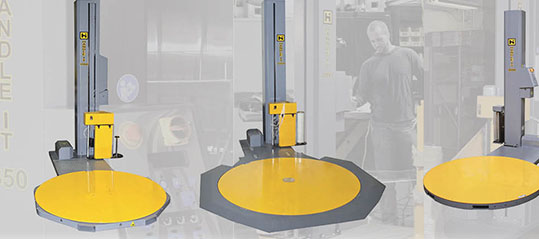
Shop our wide variety of pallet wrapping machines and stretch wrappers to improve your current packaging process.
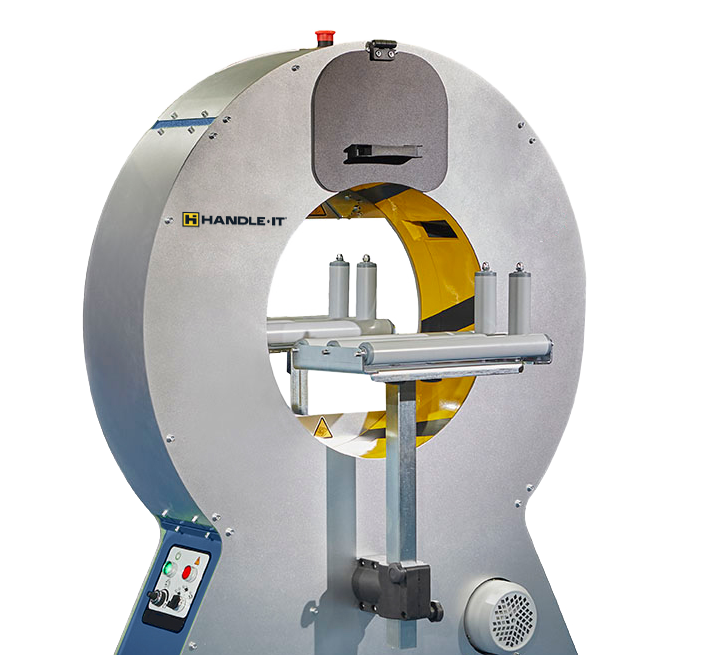
Shop our several types and sizes of orbital wrapping machines to meet your horizontal product bundling needs.
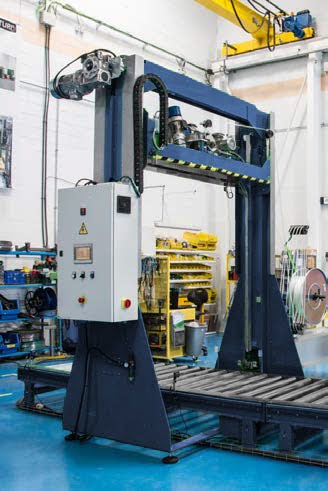
Shop our pallet strapping equipment to secure your products for safe and reliable transport.
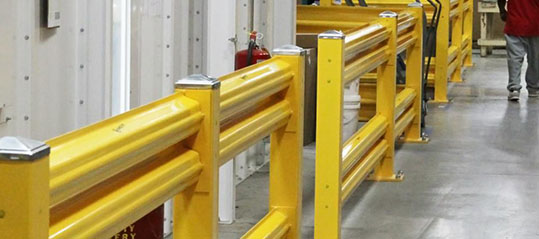
Shop our guard rail systems and components to improve the safety of the people, structures and items in your warehouse.
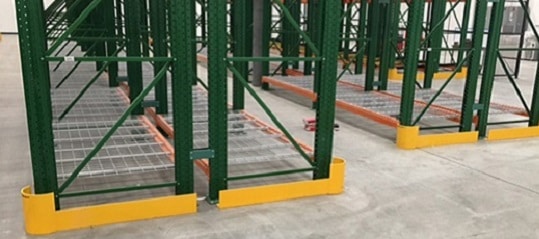
Shop rack & post protectors to decrease the damage to your pallet racks and posts due to impact from forklifts and pallets.